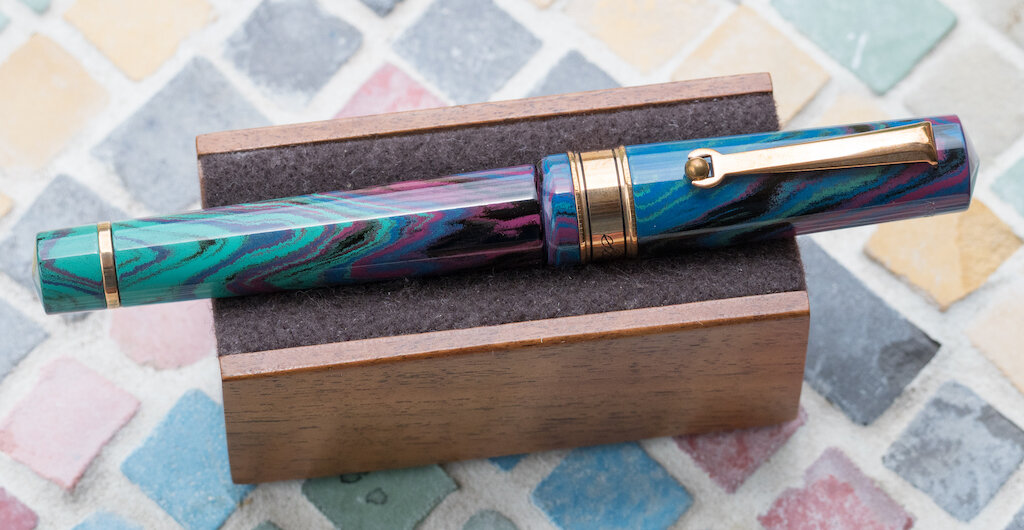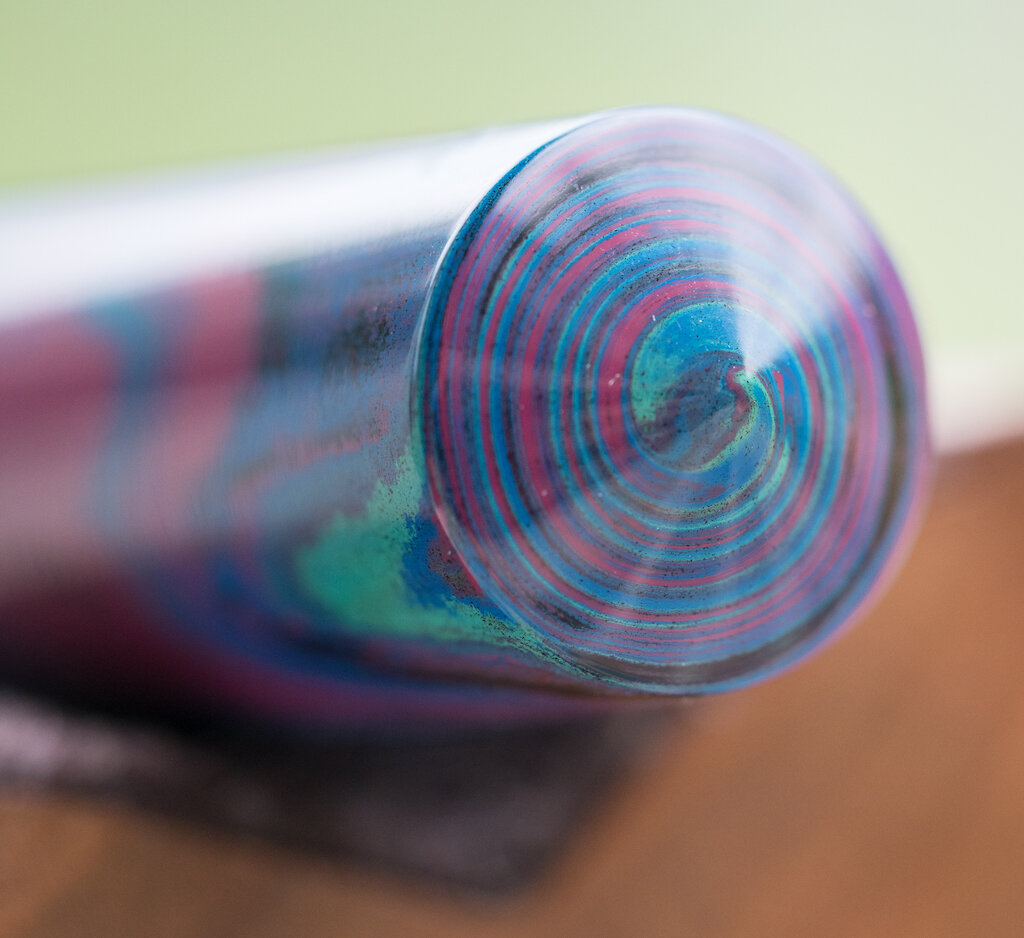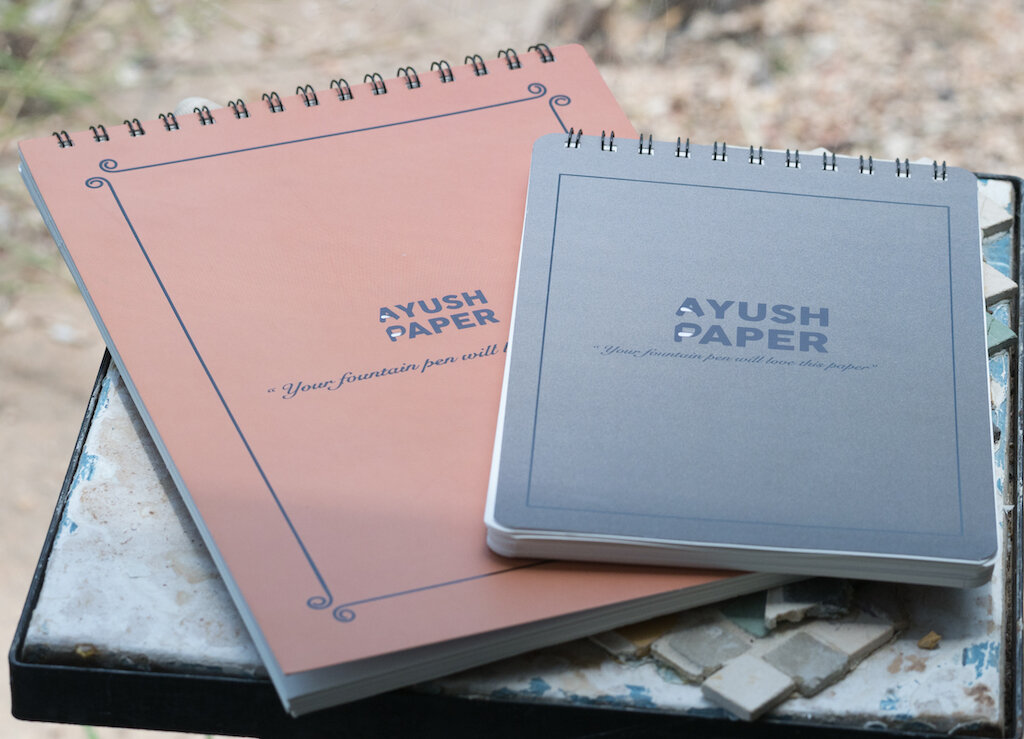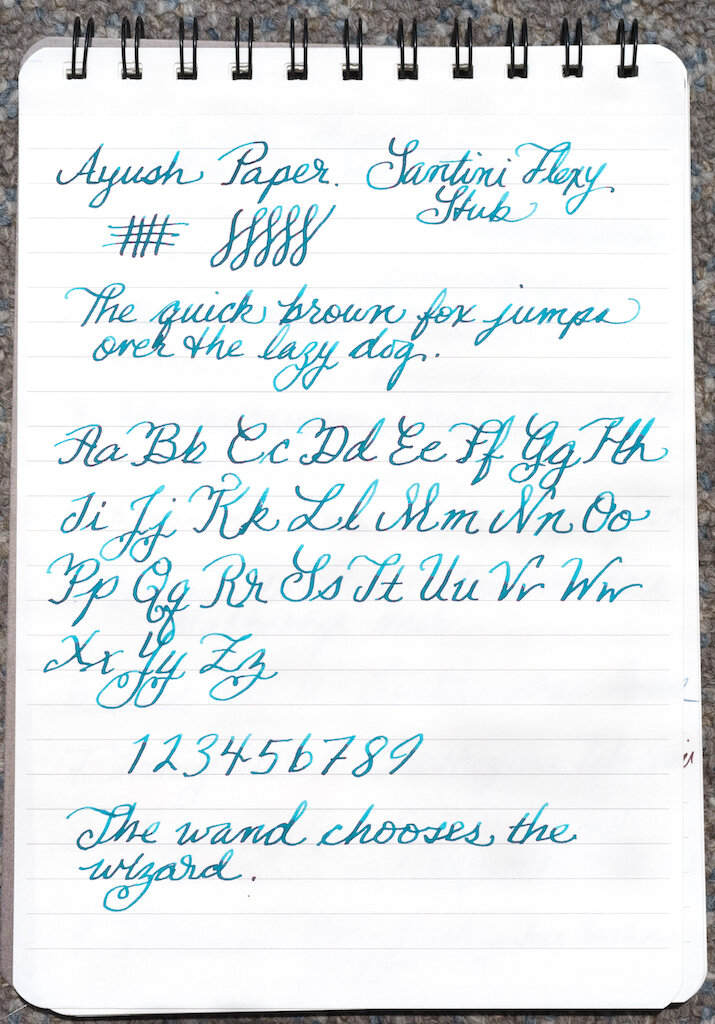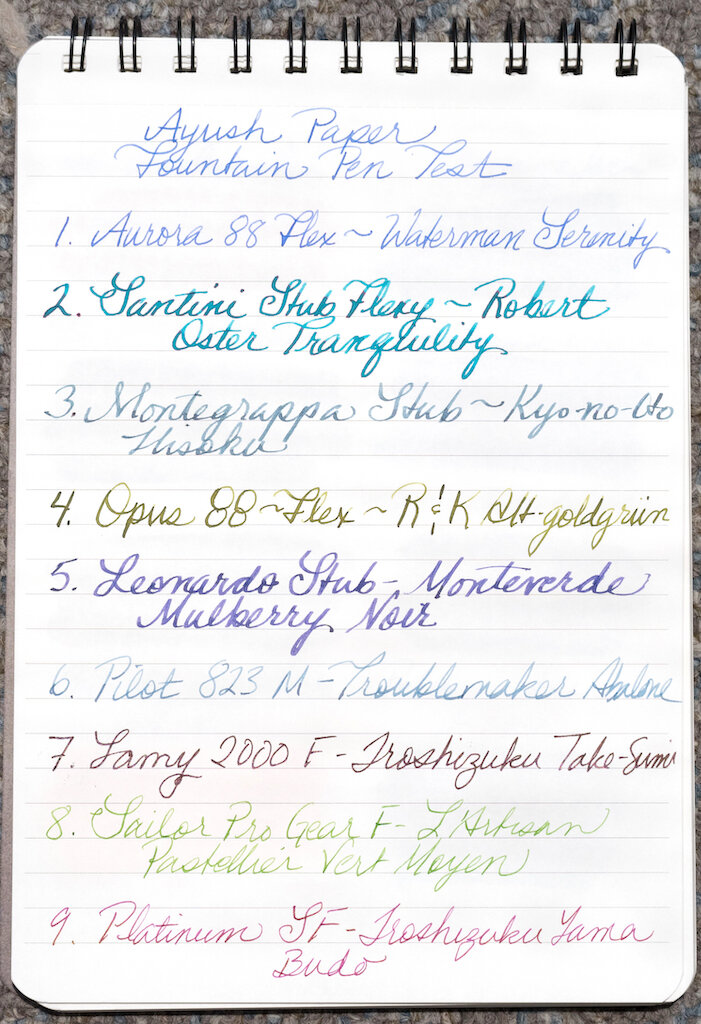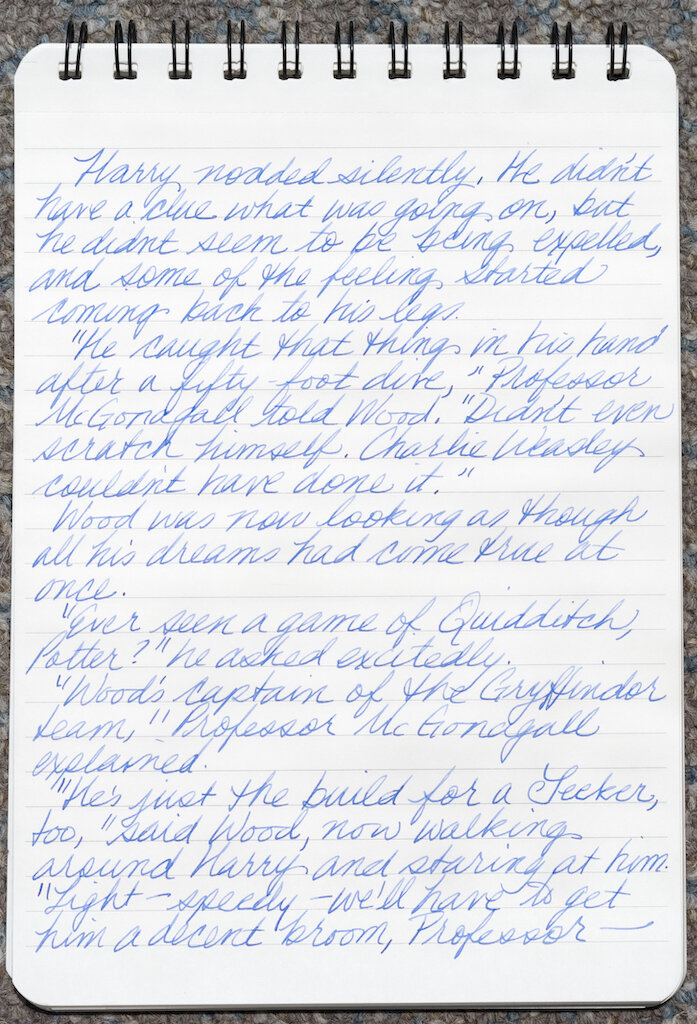The Musubi Cosmo Air Light Folio Notebook is a beautiful minimalist notebook with 208 pages of Cosmo Air Light paper. Simple white cotton adorns the cardstock covers of the notebook. The cotton has a lovely texture to it, and the only branding is the barely-visible Musubi logo embossed on the bottom right corner.
The end pages are made of a thicker, water-color-like paper. There's no printing, branding, or decoration whatsoever. The outside corners of the notebook are rounded.
Inside, the pages are Smyth-sewn, so they lie completely flat when the book is open. Cosmo Air Light is 83gsm, so it is thicker than Tomoe River Paper, but lighter than Bank Paper. My notebook is the lined version. The lines are printed in a light sage ink and are spaced 7mm apart. In addition, there are small marks at the top and bottom of each page which divide the page up into halves, thirds, and fourths.
I first discovered Cosmo Air Light paper when I did a review of the Yamamoto Fountain Pen Friendly Paper Collection (part 1 and part 2). It was one of my favorites in the collection.
The paper is smooth and lacks any texture. Its smoothness derives from a coating that is put on the paper (originally for book printing). The coating enhances any ink's sheen or shading properties. The thickness of the paper means that there's very little ghosting and no bleed through, which makes Cosmo Air Light more user friendly, in my opinion, than the popular Tomoe River Paper.
I tested the paper with eleven fountain pens with varying nib sizes and different inks. The paper handled all the inks with ease--no feathering, no bleeding, and only slight ghosting (so little it doesn't show up in photos). Several inks shaded well, and sheen was evident in Iroshizuku Take-Sumi, Robert Oster Tranquility, and Iroshizuku Yama-Budo. The only negative was a lengthy dry time for the wetter inks.
Swabs on this paper look fantastic. The ink colors are vibrant and true, and shading and sheen are pronounced. On the reverse side there's no bleed through and only mild ghosting.
I tested the paper with a dip calligraphy pen inked with Taccia Sabimidori (reviewed here). I discovered that Cosmo Air Light is not the best paper for calligraphy. Because of the coating, the ink does not settle into the paper well, resulting in thick lines and uneven lettering. Compared with Ayush Paper (reviewed here), Ayush wins hands down for calligraphy--the paper absorbs the ink more quickly, allowing for good results with flex. Although the ink doesn't sheen as much as Cosmo Air Light, I think the trade-off is worth it if you're doing calligraphy.
I did longer writing samples with three pens: a Santini stub (reviewed here), inked with Robert Oster Tranquility; a Lamy 2000 fine, inked with Iroshizuku Take-sumi; and a Leonardo stub (reviewed here), inked with Monteverde Mulberry Noir. Cosmo Air Light really shines as a journaling paper because it handles different pens and inks so well. There's a pleasant sensation as you write on this smooth paper. Once again, I noted no feathering or bleed-through and only slight ghosting.
Cosmo Air Light remains one of my favorite papers. It outshines Tomoe River Paper in many ways: it is thicker and therefore does not suffer from ghosting; it has a smooth surface and is pleasant to write on, much like Tomoe; and it enhances sheen and shading even better than Tomoe (although that can mean longer dry times). I realize that one of the things people (me included) love about Tomoe River Paper is how thin and light it is. That's a great quality for planners, because it keeps them thinner overall. But for journaling, I think Cosmo Air Light is a better choice because you can write front and back without your writing showing through.
The Musubi Cosmo Air Light Folio Notebook retails for approximately $25.00 (35 Singapore dollars). You can get it with plain pages, lined pages, or cross grid with page numbers. It doesn't have many bells and whistles--no ribbon bookmark or pockets or elastic closure, but I love its minimalist design. I've never seen a notebook with so little branding. It's elegant, beautiful, and functional. And, sometime in 2021, Musubi is planning to release covers for their Folio Notebooks in the beautiful materials they use for their handmade notebooks. I can hardly wait!
(Musubi provided the Cosmo Air Light Folio Notebook to Pen Addict free of charge for review purposes.)
Enjoy reading The Pen Addict? Then consider becoming a member to receive additional weekly content, giveaways, and discounts in The Pen Addict shop. Plus, you support me and the site directly, for which I am very grateful.
Membership starts at just $5/month, with a discounted annual option available. To find out more about membership click here and join us!



















